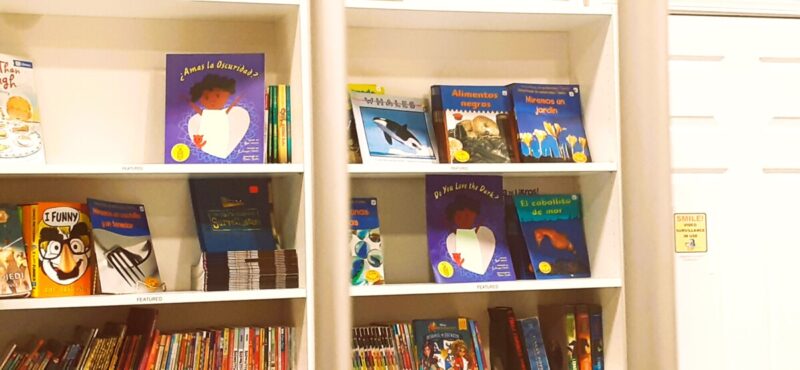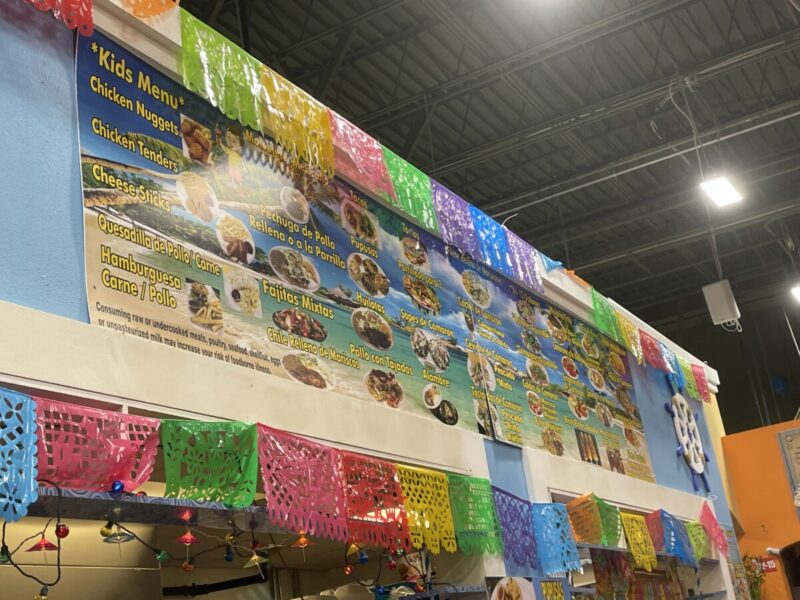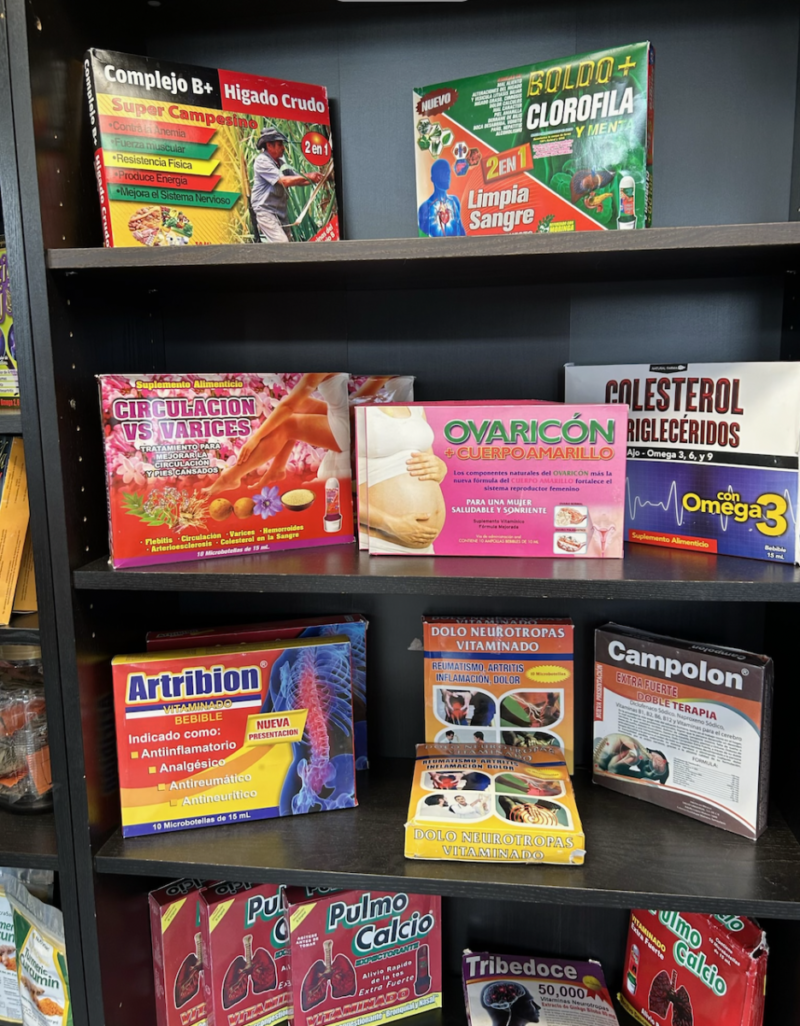Dulce De La Cruz
Introduction:
The Dekalb Farmers Market is located in DeKalb County, Georgia and has come a long way from its humble beginnings when it was founded in 1977. It is now known as the “world market” bringing a great number of international products to locals. It could even be argued that it was the first supermarket in metro Atlanta to bring international and multicultural cuisine and food to Atlantans. Although the market is located in DeKalb County, it is difficult to know the exact demographics of its customers since the market caters to a much larger demographic of people outside the county, including tourists of the city of Atlanta and residents in the greater Metro Atlanta area. Because of the international and multicultural focus of the market, I was interested in studying how internationalization was represented at the market and decided to focus on the representations of countries through the flags located at the Dekalb Farmers Market and the countries of origin of the produce available at the market. My main goal for this research was to find any correlation between what countries were represented in the flags at the market and the produce available. I also wanted to see if there were certain countries that were particularly highly represented through the produce.
Research Design:
Since there is a no photography or videography rule at the market, I was unable to take any pictures or videos for my research. I improvised by voice recording myself as I walked down each produce’s aisle, reading the signs under each flag that contained the flags’ names out loud. I did the same with the produce, repeating the type of produce that I saw and the countries (or states) where each type of produce originated from.

Results:
Regarding the flags that are found hanging from the ceiling, every country that is recognized by the UN was represented. There was no particular order in which the flags were in; however, on occasions there were a few clusters of flags that were in alphabetical order or that all started with the same letter. Another feature noted was that the signs of each country’s flag’s names were in English, and for the most part, had English orthography. One more thing that is worth mentioning was that there was a Dekalb Farmers Market flag hung amongst the other countries’ flags, right in the middle of the others. This flag also contains other countries’ flags in the logo.


One of the first features noticed during data collection was that there were only a couple of countries where most of the produce was from, the main one being Mexico, accounting for a total of 40.5% of imported produce. Other countries with a greater presence of imported produce were Guatemala, Ecuador, and Canada, accounting for a combined total of 21.5% of imported produce. In all, imported produce accounted for 48% of the market’s available produce. Produce local to the U.S. accounted for 52% of all produce available. When produce was local to the United States, the exact state of origin was listed. In total, produce came from 15 different states, but two of the states, California and Florida, accounted for 62% of produce from the U.S. Interestingly, there was very little produce local to Georgia, a state known for its agriculture. When a certain type of produce had different varieties, usually most of the varieties came from the same country. Take, for example, tomatoes. There were seven different kinds of tomatoes available, all originating from Mexico.

Analysis and Discussion:
The representation of different countries at the DeKalb Farmers Market is evident and inclusive to all countries through their flags that are found hanging from the ceiling all throughout the market. However, when it comes to the representations of different countries through the produce at the market, the results are a little different. All the produce originated from a few select countries as well as select states. There are a few factors to consider when it comes to produce, such as import time and the shelf-life of produce, which is much less than canned or dry food. That a great percentage of produce originated from Mexico could be due to a few factors. For starters, according to the U.S. Census for 2021, an estimated 12,770 people, or 10.39% of the total foreign-born population in DeKalb County was born in Mexico, making it the largest country of origin for the foreign-born population in the county. This could be a reason for the large presence of Mexican produce at the market. Secondly, Mexico has a great variety of agricultural products that are locally grown and exported to neighboring countries. Its close proximity to the U.S. makes it much easier to import goods. According to the International Trade Administration website, “the United States remains Mexico’s principal agricultural trading partner” with “Mexico ranking as the third-largest agricultural trading partner” for the United States. Given Mexico and the U.S. agricultural agreements and the large percentage of the Mexican population in DeKalb County, it is no surprise that the country with the most representation through their produce at the market is Mexico.
That most of the products were from the U.S. is not surprising, but the lack of local produce from the state of Georgia is puzzling. Conceivably, because the Market caters to a wide demographic of people from all over the metro Atlanta area, there is an attempt to provide the widest array of products possible, which most likely results in carrying produce not grown in Georgia. It is also fair to say that this market’s selection of produce is far greater than that found at a standard supermarket in the state. Florida and California’s place as the top two states of origin are to be expected; both states are known for their agriculture and given Florida’s close proximity to Georgia, produce would cut down on travel time and have a longer shelf life at the market.

Focusing on only produce allowed me to conduct a small-scale study and gain some insight into the international and local imports of agricultural products that are available at the Dekalb Farmers Market. While at the market, I couldn’t help but observe a few noticeable encounters with customers and employees regarding language differences but still found a way to facilitate communication. I would love to expand this study further by tapping into the lived spaces of the market by interviewing the store’s workers and the customers and further exploring how the market caters to its customers.





2 Comments
Add Yours →I really loved how you focused in on produce as a way of studying multiculturalism in Dekalb. I often look at where my produce is coming from, but never take the time to consider how predominant each country of origin is, so this piece really made me take a moment to think about how the short shelf life of produce impacts where its being imported from!
I really enjoyed this piece. I have visited the this farmer’s market before but never considered the origins of the produce as I have always been more drawn to packaged goods from certain origins. Very intriguing and insightful!